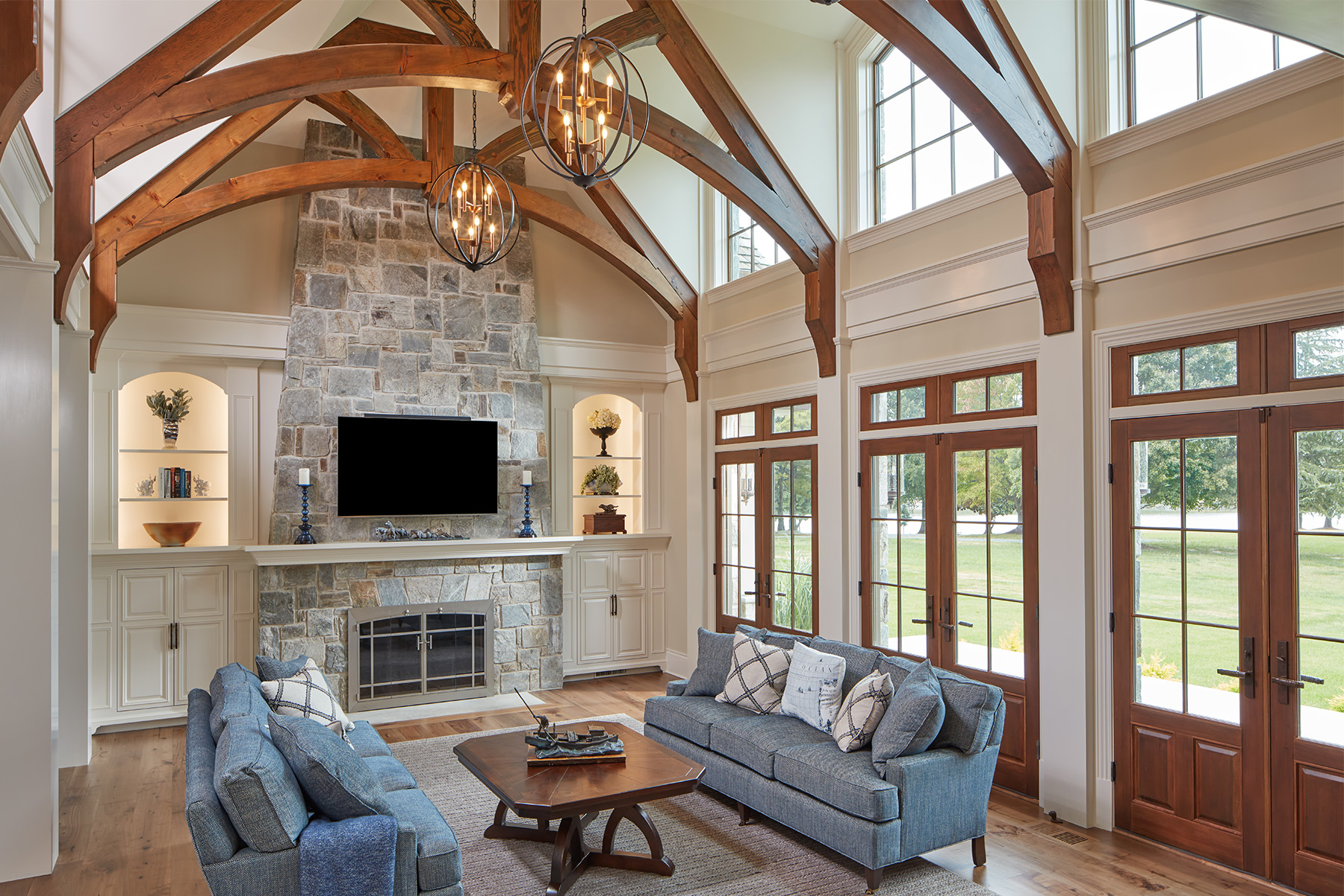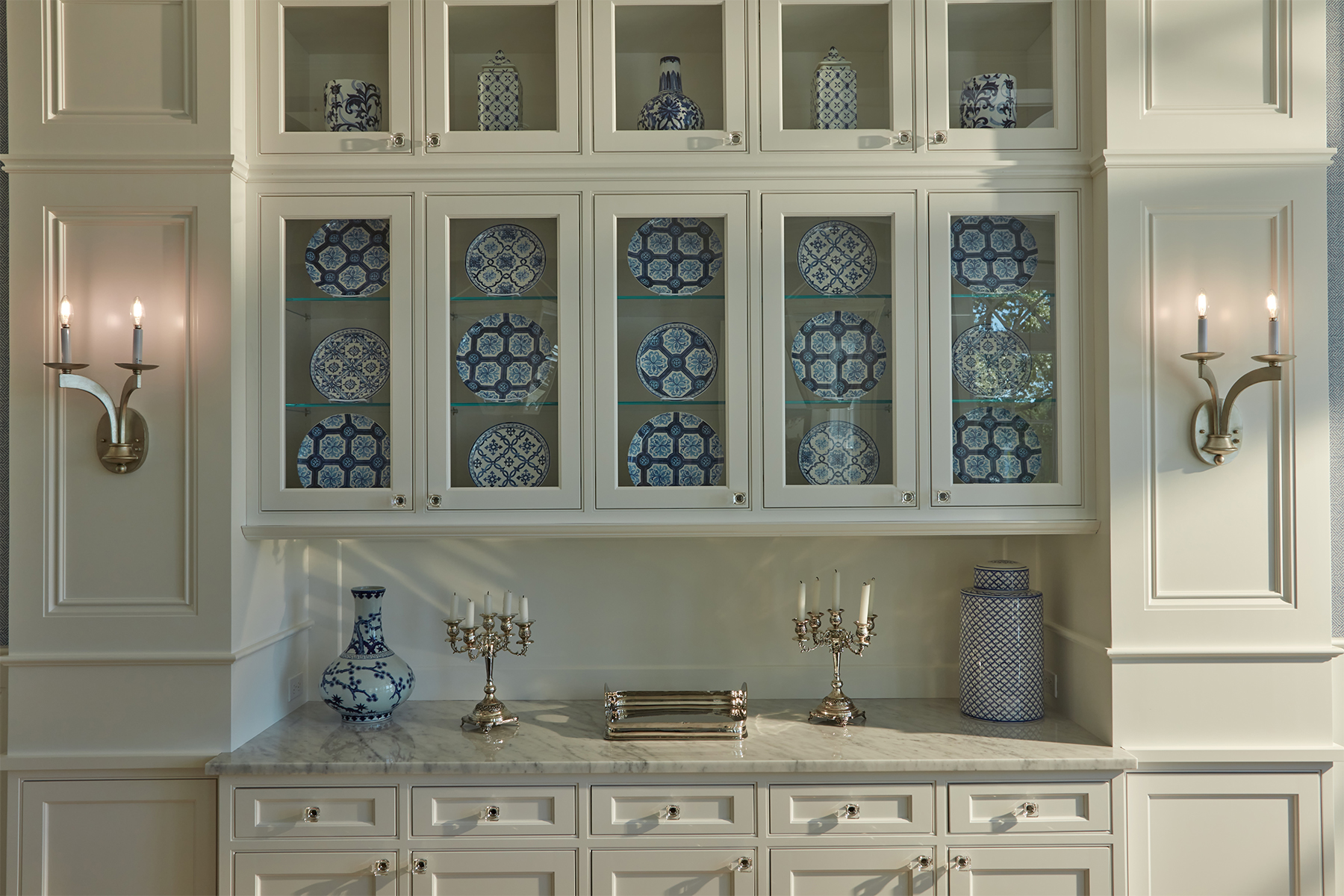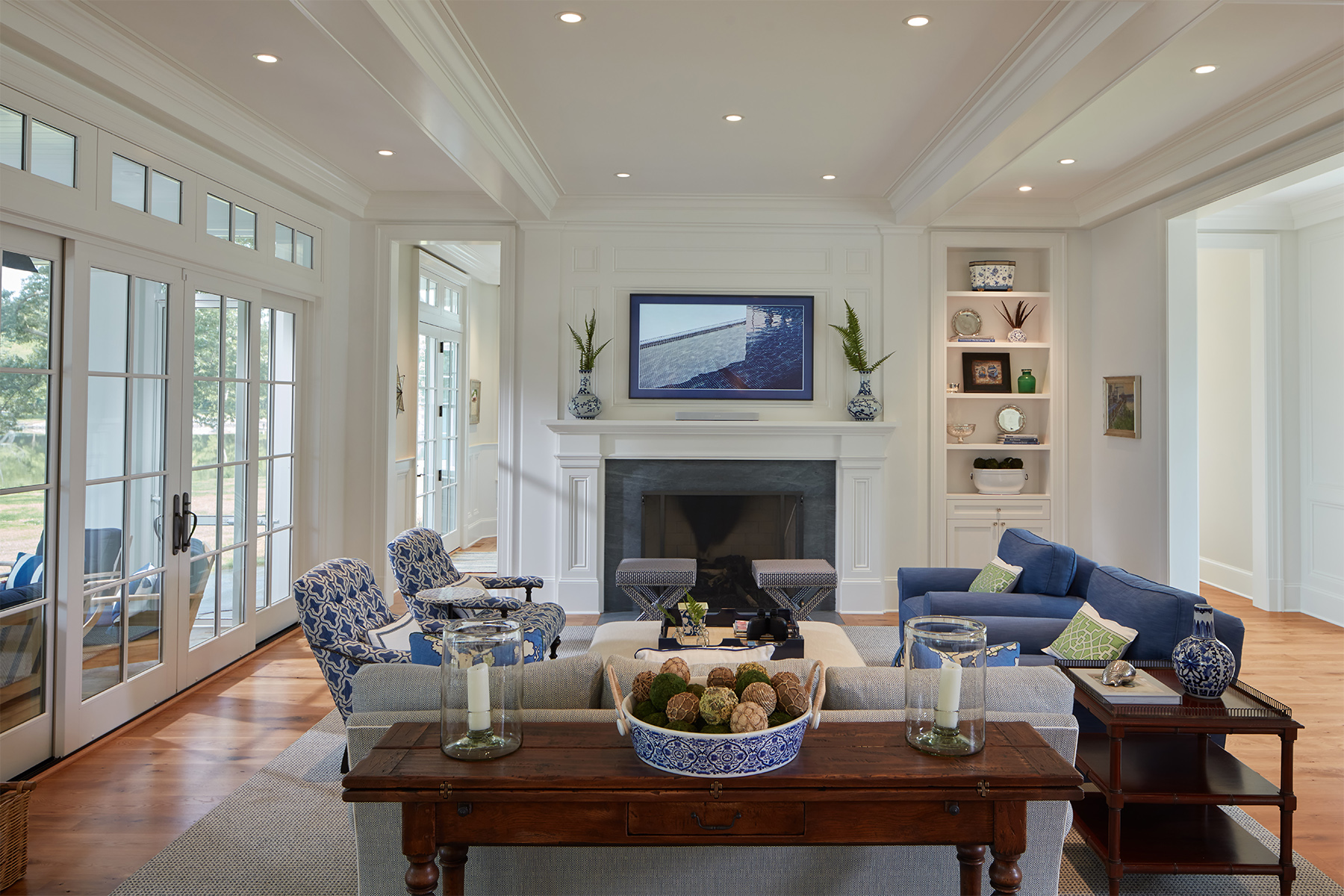Express Yourself with Interior Cabinetry
Many people think first of kitchens when considering interior cabinetry, but cabinets and millwork can be successfully integrated into any space in the home, and have an incredible ability to take multiple forms, adding function, beauty, and craftsmanship to an interior. Cabinetry is both functional and decorative, providing storage, concealing clutter, and displaying heirlooms while providing accent points to a space or completely setting the tone for an interior. While kitchens are necessary functional spaces as well as social hubs for many contemporary homes, kitchen cabinets can be beautiful design elements in their own right. Cabinetry and millwork can be used throughout the home for myriad uses, and can utterly transform the character of a house. Both of these elements help bring human scale to a space.

Dining rooms and butler’s kitchens, often near the kitchen and sharing some of the kitchen’s needs for storage of dishware, linens, and utensils, will often contain built-in cabinetry. In a formal dining room, care should be taken to distinguish the design of the cabinets from those in the kitchen. Changes in color or wood species, and adjustments to countertop height or cabinet depth can be used to make dining cabinetry more furniture-like.
In living rooms, one of the areas where millwork design can have the greatest impact is in mantels and fireplace surrounds. Because the size and prominent placement of a fireplace usually makes it a major element in a room, the design of a mantel exerts a powerful influence on the design of the entire space. Very often, the fireplace surround extends floor to ceiling, and can incorporate other elements such as TVs and bookcases into an extensive composition. Living room cabinetry can take many other forms as well, from bookshelves to window seats to wet bars.



Home offices, like kitchens, are both functional work spaces and beautiful rooms to spend time in. The scholarly ambience of a bookshelf-lined hideaway is something any bibliophile would want. If storage for files or homes for printers, scanners, or other equipment is desired, closed cabinets hide the mess of everyday life away behind closed doors.


Wall paneling is a purely decorative element, but it can completely surround the occupant in luxurious detail that is impossible to get any other way. Some of our most familiar archetypes involve paneling; think of a Victorian captain of industry in his dark walnut drawing room, or a family on vacation gathering around the table of a cheery coastal cottage with white-painted bead board walls. Although the specific personalities of those two rooms are very different, they are fundamentally defined by the texture and detail of the paneled walls.

Beams & coffers offer a level of elaboration and decoration to an often-underused surface of a room: the ceiling. An unadorned ceiling can feel boring and underwhelming, particularly in the large, open great rooms that so many clients desire. Adding beams or coffers to the ceiling plane creates visual interest and can help to organize the space and give it a comfortable scale. The detailing of the beams themselves can be adapted to any architectural style or room shape. In a French country house with a cathedral ceiling, the beams are shaped, with sharp corners and a warm stain. In a traditional home, the coffers are deep and wide, with ornamental crown mold applied at the ceiling and decorative beads along their edges. The weight and complexity of the ceiling ornamentation is an inextricable part of the design of the space.


For any room of the house or type of cabinetry selected, the details fundamentally drive the character and appearance. The level of detail and interest is one of the great benefits cabinetry brings into an interior, but since every detail has multiple different options, the number of decisions can feel bewildering. However, a few basic distinctions greatly influence the final appearance and character of a design.
Raised panel vs. Flat Panel?
Raised panel designs tend to feel more formal, and are often found in traditional architecture. The additional shadow lines created by the panel profile adds a gorgeous richness to the finished cabinetry that can be further elaborated by moldings or beading applied to the edges of the frame. Flat panel designs can tilt toward a modern look, although they are equally at home in a rustic or cottage-style design. Shaker flat-panel doors are incredibly flexible, working beautifully in many different styles, and they can be elaborated with the addition of shaped edges or textured panels.

A fundamental choice is between a transparent finish, which shows the color and grain of the underlying wood, and a painted or glazed finish. The choice of wood species is critical if it will be exposed under a stain, and the variety and beauty of the myriad wood species that can be used provides options for every taste. The richness of stained cherry or walnut gives a totally different feel to a room than a blond maple or a lime-washed birch cabinet. Apart from color, the grain pattern of different wood species is very different, with some species giving less contrast and grain pattern than others. Painted finishes allow a similar variety, allowing the choice of any color that can be mixed. Glazes and textures such as distressing can be layered on painted cabinets, and accent pieces such as kitchen islands can be painted in contrasting colors for a splash of excitement.
Throughout a house, cabinetry combines functional problem-solving with beauty and character. With creative thinking, it can add desired utility to any room and yet provide the stunning centerpiece to a home.
